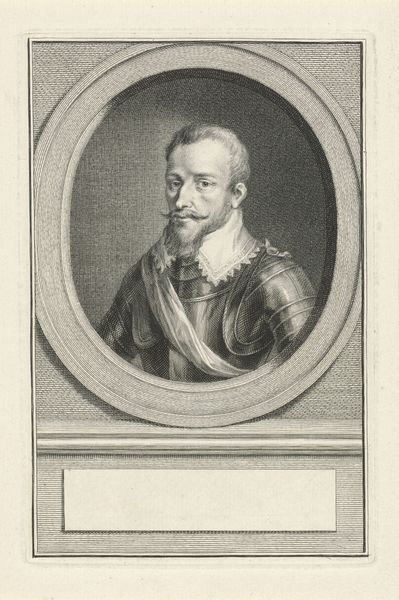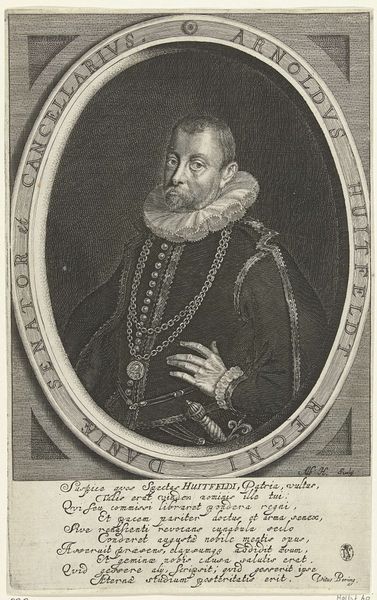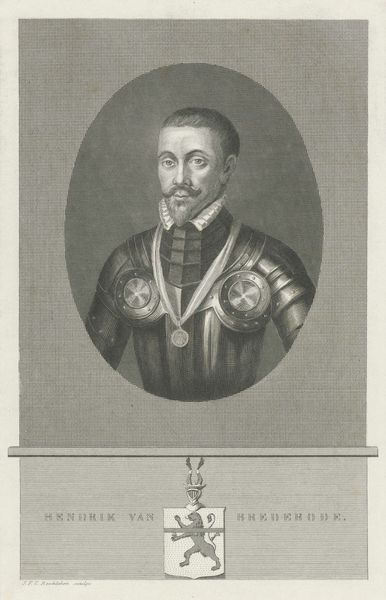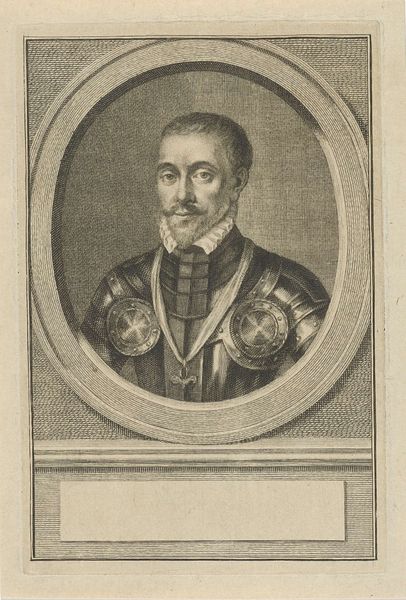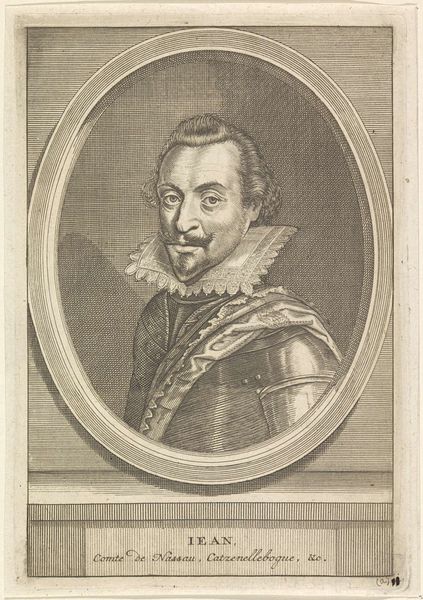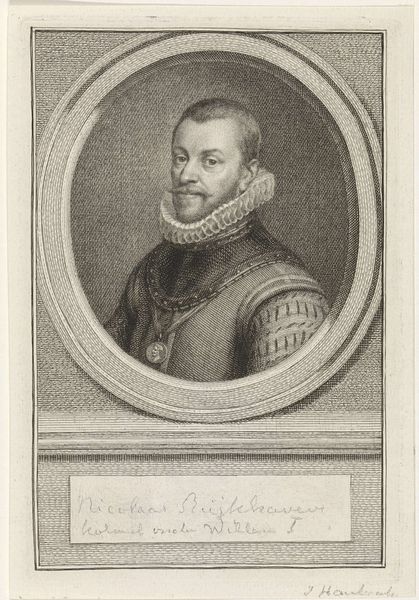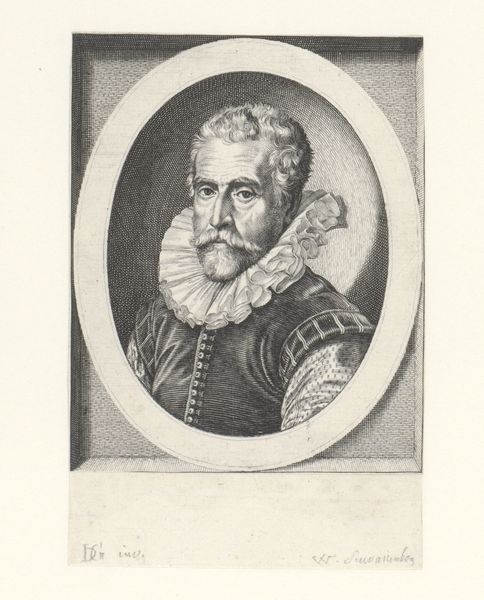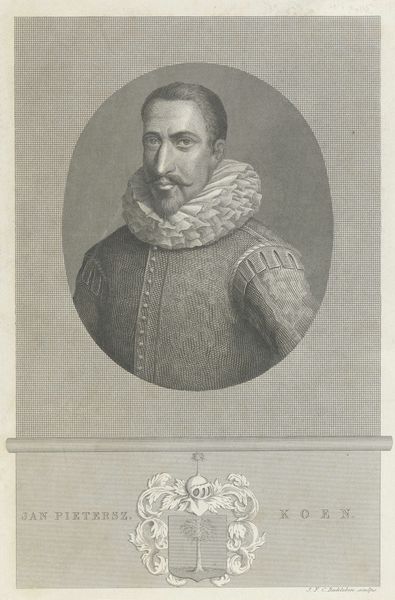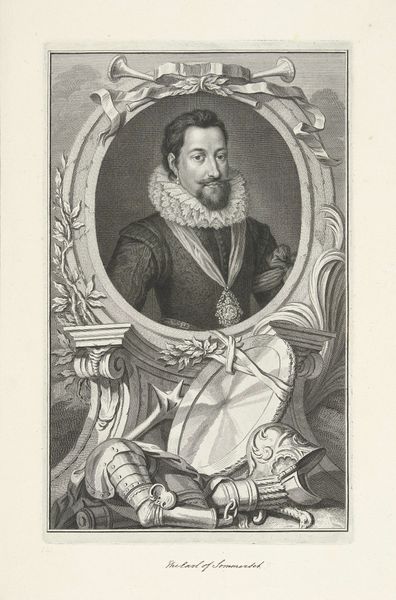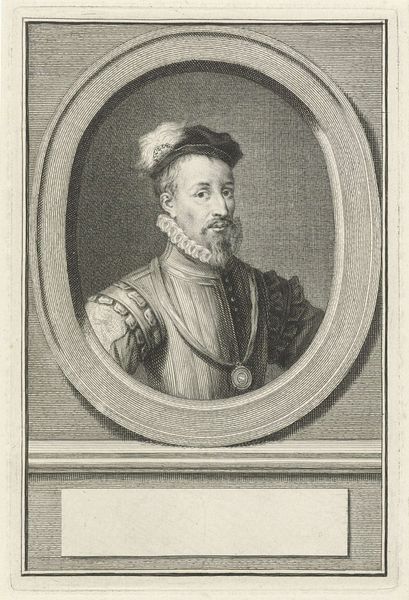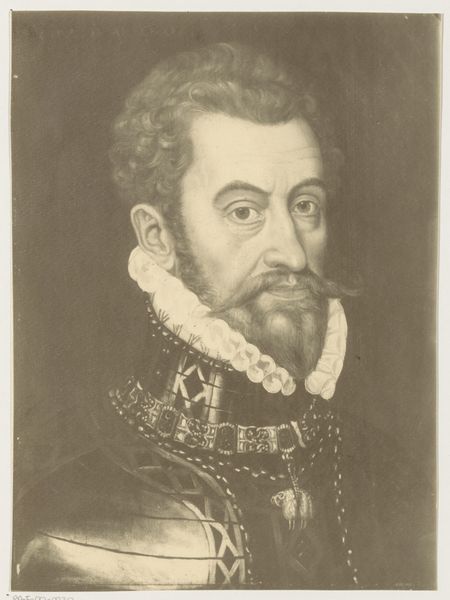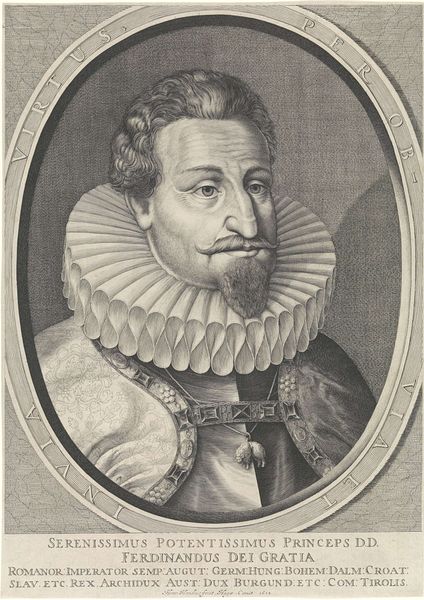
engraving
#
portrait
#
historical photography
#
romanticism
#
history-painting
#
academic-art
#
engraving
Dimensions: height 225 mm, width 150 mm
Copyright: Rijks Museum: Open Domain
Editor: So, here we have "Portret van Filips II", created between 1849 and 1851 by Jan Frederik Christiaan Reckleben, currently residing at the Rijksmuseum. It’s an engraving, which I find amazing given the level of detail. He looks… stern. Regal, definitely, but a bit severe. What do you see in this portrait? Curator: Well, the first thing that strikes me is the… weight of it. Not physically, of course, but emotionally, historically. You're right, there's severity there, but I think Reckleben is also trying to capture the burdens of power. He's a man weighed down by the crown, wouldn't you say? Look at the detail in the chain, each link representing perhaps a responsibility or a conquest. Editor: Absolutely, that makes sense. It's almost like each tiny piece builds this story. Now I’m curious—why choose an engraving? Why not a more…flattering medium for a king? Curator: That's a terrific question. An engraving, in a way, lends itself to this gravity. The sharp lines, the contrasts... they create a sense of unyielding presence. Plus, engravings were easily reproducible, right? So it becomes about disseminating this particular image, this very specific message about Philip II, widely. Who do you think it's for? Editor: Maybe to control his image? What an intriguing spin. Thinking about the intended audience shifts everything for me. I initially only considered Philip II and this engraving as art from the past, but you made it much more personal. Thank you! Curator: And thank you for such insightful questions. Thinking about these things is what keeps art alive, doesn't it? Makes it connect, link to now. It's about storytelling with images, and it can tell very compelling truths.
Comments
No comments
Be the first to comment and join the conversation on the ultimate creative platform.

